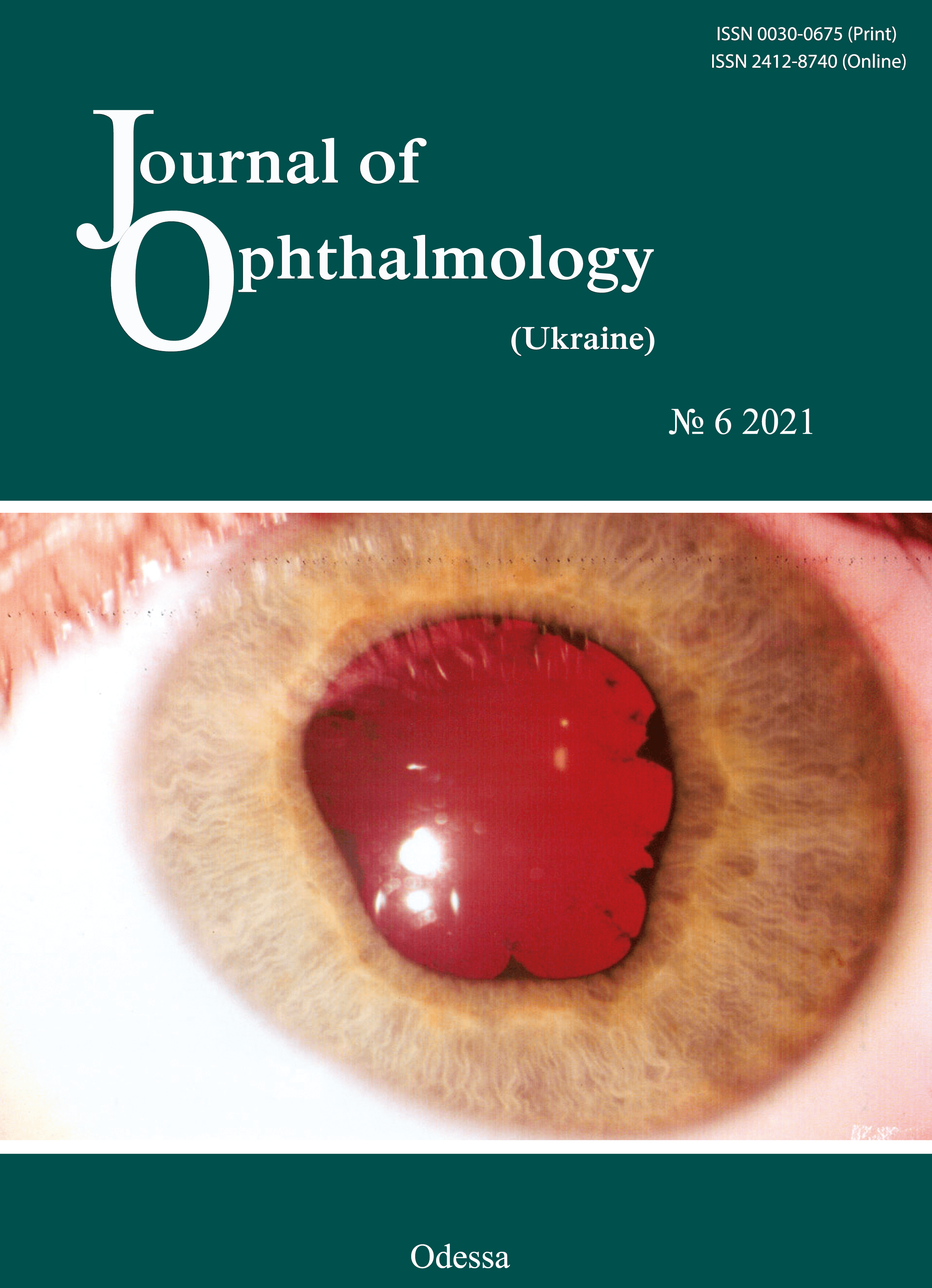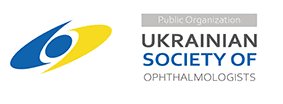Hypotensive effect of endotrabeculectomy as a function of the stage of glaucoma and preoperative intraocular pressure in patients with primary open-angle glaucoma
DOI:
https://doi.org/10.31288/oftalmolzh202164147Keywords:
primary open-angle glaucoma, endotrabeculectomy, intraocular pressure, topical hypotensive medicationAbstract
Background: In recent years, minimally invasive glaucoma surgery (MIGS) (particularly, ab interno MIGS) has been actively developed. Various studies have focused on the efficacy of these procedures.
Purpose: To assess intraocular pressure (IOP) reduction from baseline after controlled endotrabeculectomy (ETE) in patients with different stages of primary angle glaucoma (POAG) and preoperative IOP levels.
Material and Methods: Eighty-eight patients (88 eyes) that received controlled endotrabeculectomy for POAG were included in the study. The 88 patients were divided into two groups based on the stage of glaucoma. In addition, these patients were divided into two other groups based on the preoperative IOP. IOP readings were obtained with a Maklakoff tonometer preoperatively and on day 7 and 1, 3, 6, and 9 and 12 months after surgery. The numbers of hypotensive medications used and visual acuities at the above time points were also noted.
Results: The difference between preoperative IOP and postoperative IOP was significant for all groups until month 12 (p < 0.05), irrespective of the stage of glaucoma and the preoperative IOP. The intragroup difference between preoperative and postoperative numbers of hypotensive medications was significant (p < 0.05) for group 1 and group 3 until month 12, for group 2 until month 9, and for group 4 until month 6. The difference at subsequent time points (month 9 and month 12) was not significant.
Conclusion: Controlled endotrabeculectomy can be recommended for patients with stage 1 of stage 2 of glaucoma and/or a baseline IOP of 24 mmHg or lower. In addition, it can be recommended for patients with a baseline IOP of 25 mmHg or higher and patients with stage 3 of stage 4 of glaucoma, but in these cases, one should take into account a high probability of requirement of topical hypotensive medications in the postoperative period.
References
1.Vitovska OP, Alifanofa TA, Poveshchenko YuL. [Epidemiological aspects of primary disability caused by glaucoma in Ukraine]. Oftalmologiia. 2016;2:16-25. Russian.
2.Ukrainian Medical and Dental Academy. [Glaucomas. Optic nerve disorders]. 2019. Ukrainian.
3.Novytskyy IIa. [Current surgery for primary open-angle glaucoma. A shift towards minimally invasive surgery]. Lviv:Litopys;2018. p.106-119. Ukrainain.
4.Musch DC, Gillespie BW, Niziol LM, et al. Factors Associated with Intraocular Pressure before and during 9 Years of Treatment in the Collaborative Initial Glaucoma Treatment Study. Ophthalmology. 2008 Jun;115(6):927-33. https://doi.org/10.1016/j.ophtha.2007.08.010
5.Zavgorodnia NG, Sarzhevskyi AS. [Results of sinus trabeculectomy and iridectomy for the management of glaucoma combined with cataract]. Zaporozhskyi medychnyi zhurnal. 2015;89(2):70-3. Ukrainian.
6.Novytskyy M. [Pathogenetic grounds for ab interno endotrabeculectomy for primary open-angle glaucoma]. Arkhiv oftalmologii Ukrainy. 2014;59:54-9. Ukrainian.
7.Godfrey DG, Fellman RL, Neelakantan A. Canal surgery in adult glaucomas. Curr Opin Ophthalmol. 2009 Mar;20(2):116-21. https://doi.org/10.1097/ICU.0b013e32831eef65
8.Grover DS, Godfrey DG, Smith O, et al. Gonioscopy-assisted transluminal trabeculotomy, ab interno trabeculotomy: technique report and preliminary results. Ophthalmology. 2014 Apr;121(4):855-61. https://doi.org/10.1016/j.ophtha.2013.11.001
9.European Glaucoma Society. Terminology and guidelines for glaucoma. 4th ed. Publicomm: Savona, Italy. 2017
Downloads
Published
How to Cite
Issue
Section
License
Copyright (c) 2025 И. Я. Новицкий , О. В. Левицкая

This work is licensed under a Creative Commons Attribution 4.0 International License.
This work is licensed under a Creative Commons Attribution 4.0 International (CC BY 4.0) that allows users to read, download, copy, distribute, print, search, or link to the full texts of the articles, or use them for any other lawful purpose, without asking prior permission from the publisher or the author as long as they cite the source.
COPYRIGHT NOTICE
Authors who publish in this journal agree to the following terms:
- Authors hold copyright immediately after publication of their works and retain publishing rights without any restrictions.
- The copyright commencement date complies the publication date of the issue, where the article is included in.
DEPOSIT POLICY
- Authors are permitted and encouraged to post their work online (e.g., in institutional repositories or on their website) during the editorial process, as it can lead to productive exchanges, as well as earlier and greater citation of published work.
- Authors are able to enter into separate, additional contractual arrangements for the non-exclusive distribution of the journal's published version of the work with an acknowledgement of its initial publication in this journal.
- Post-print (post-refereeing manuscript version) and publisher's PDF-version self-archiving is allowed.
- Archiving the pre-print (pre-refereeing manuscript version) not allowed.












